Heritage Trail Location 20
Kirkstead a short history
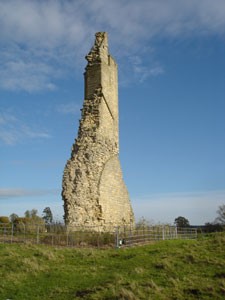
Photo 1 – Kirkstead Abbey ruins
Kirkstead and Kirkstead Wharf are small communities in mid-Lincolnshire, close to Woodhall Spa. They are older settlements than Woodhall Spa, but have become overshadowed by that village since it was developed in the 19th century.
At the time of the Norman Conquest Kirkstead was a hamlet of Kirkby on Bain. Kirkstead Wharf developed later alongside the river Witham. The name may be a corruption of the Old English ‘wath’ meaning a ford, sinc there appears to have been a crossing place there since the Middle Ages, and possibly earlier.
William the Conqueror awarded a manor at Kirkstead to Eudo, one of his Knights. The Abbey of Kirkstead, dedicated to St May, was found in 1139 by Hugh Brito, Eudo’s son, the Lord of Tattershall. He visited Fountains Abbey, and, admiring the way of life there, set up a colony of monks in an area of brushwood and marsh at Kirkstead. The original area was not suitable, and in 1187 Robert, Hugh’s son, allowed the monks to move a little further away, although they still complained that the area was swampy and unhealthy.
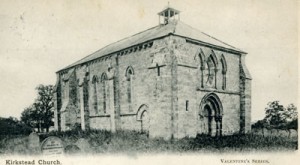
Photo 2 - St Leonard's Church - early 20th Century (Postcard from Webmaster's collection)
The Brito family continued to support the house for several generations, and it became very wealthy. According to William Page, writing in 1906, its income during the thirteenth century would have supported many monks; but like all the Cistercian abbeys in England it suffered heavy losses during the following century. In spite of these misfortunes, it was reckoned to have been one of the greater Lincolnshire monasteries.
After the dissolution of the monasteries the Abbey and its lands were taken by the King in 1537. The manor passed through several hands and in 1836 it was sold to Thomas Moore Esq., who became owner of all the land in the parish at that time. The Abbey itself fell into ruin, assisted by local landowners who used its stones for buildings of their own.
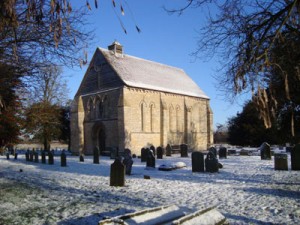
Photo 3 – St Leonard's Church (2009) - note the changes to the roof
Daniel Disney, of the same family as the legendary filmmaker, obtained, by marriage, some monastic lands and the Chapel of St Leonard. The Disney Trust was set up in 1720, using the revenue from lands left by Daniel ‘To provide a living from the land, for a Protestant Dissenting Minister for the people of Kirkstead. The Chapel was used for dissenting services from 1730 until 1812, when the Church of England took it over. A Presbyterian Chapel was built in 1821 on Mill Lane. The congregation later became Unitarian and their Services are still held in the Chapel when there is a fifth Sunday in a month. There were also Wesleyan and Primitive Methodist chapels
The River Witham, which passes close to the settlement, has been an important trade route for centuries. It would have been very important to the monastery and the local settlements as a means of transport to Lincoln and Boston. Farming produce, mainly wool, was exported from Boston, one of England’s most important ports in the Middle Ages.
The Navigation Commissioners, set up in 1762 deepened the river channel and built a lock about a mile south of the present bridge, but, under the Witham Navigation Act, this was removed in 1812. There may have been a water mill alongside the lock. There was certainly a flour mill in 1856 which was powered by a steam engine.
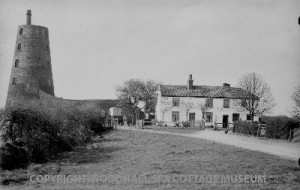
Photo 4 – Kirkstead Mill. (Photo courtesy of Woodhall Spa Cottage Museum).
The windmill at the corner of Mill Lane and Green Lane was fed by a ‘leat’, a small canal from the river to enable boats to deliver corn and collect flour. There was also a thriving bakery alongside the mill. There was a ferry crossing of the river near the mill with a hostelry called The Goose and Gridiron on the river bank. This area was known as Kirkstead Wharf. At that time Green Lane was the ’main road’ to Horncastle through Poolham and Old Woodhall before Woodhall Spa developed in the 19th Century.
With the coming of the Railway in 1848, the changes for the local community were huge. The railway bought the navigation rights and virtually ended transportation by water. The Goose and Gridiron was still in operation in 1856 but the new Railway Hotel was at the centre of activity beside the Station. The mill leat was cut-off by the tracks, and a new ferry, later replaced by a Swing Bridge was established beside the station. The name Kirkstead Wharf soon lost its relevance.
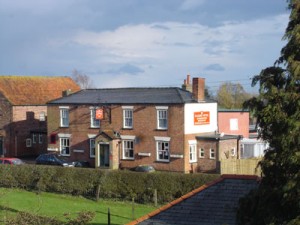
Photo 4 - The Railway Hotel (2006)
The Railway Hotel was formally called the Ragged Anchor but got the new name with the Railway opening in 1848. Harrup Atkinson, the Proprietor of the Railway Hotel for 44 years from 1865, was a farmer’s son, born in Timberland Fen . In 1835, he went, at the age of 21, to stay with his brother in California and worked in the Klondyke Gold Rush. He struck lucky, and returned 7 years later a rich man.
The railway brought a new trade to Kirkstead, by carrying fishermen from Yorkshire to matches along the river.
Sheffield folk in particular enjoyed the break from the grimy industrial city. Some lodged with local families or in public houses for the very large matches. Up to 6 trains could be waiting in the sidings at Woodhall Junction in the 1950’s to take them home after their day out. Their children and grandchildren still come here to fish and enjoy the local facilities. The Sheffield accent is still regularly heard in the area!
Visitors still come to Kirkstead along the old railway line, but they come by cycle nowadays, since a new cycle path has just opened from Kirkstead Bridge to Lincoln.
Heritage Trail locations
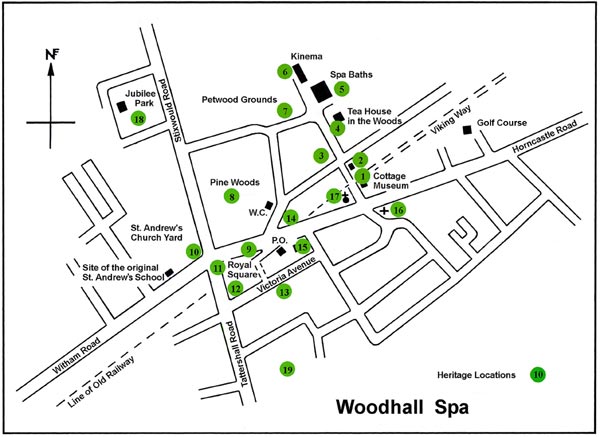
he trail can be started at any location, but we suggest you also visit the Cottage Museum to see the photographs taken by John Wield during the heyday of the Spa and items associated with this unique Victorian Spa town.
The Trail is just one of several projects in the hands of the Woodhall Spa Parish Council sponsored Heritage Committee. Click here if you are interested in the committee or their projects.
How well do you know Woodhall Spa?
See if you can identify the location of these architectural features and items of street furniture! Or find the Letterbox
Find out more about the Woodhall Spa Conservation Area